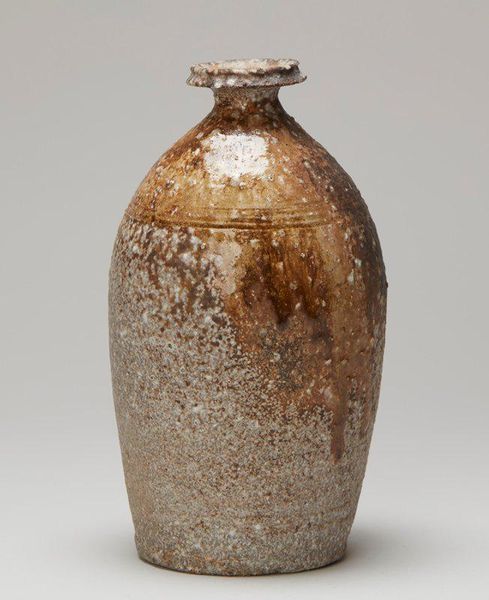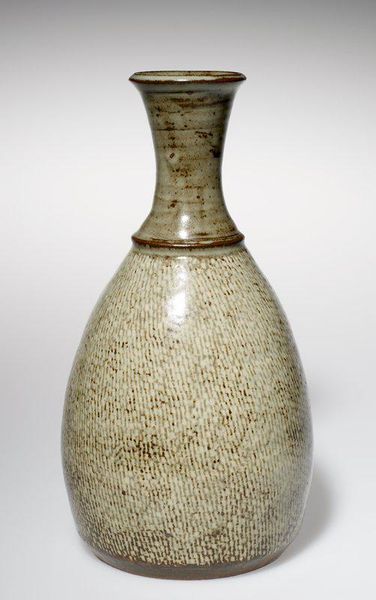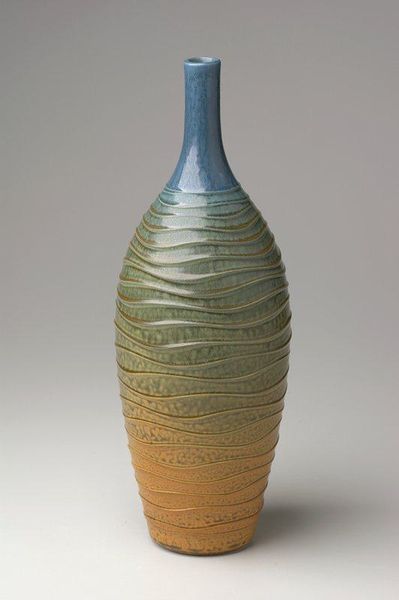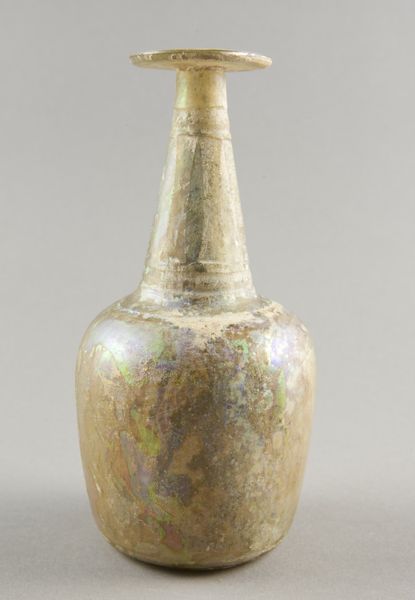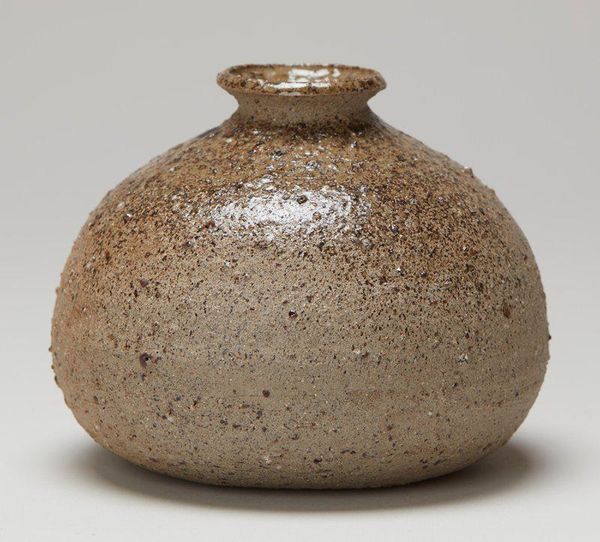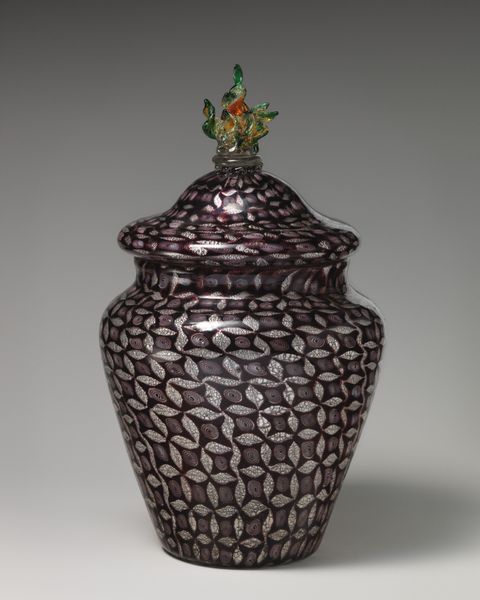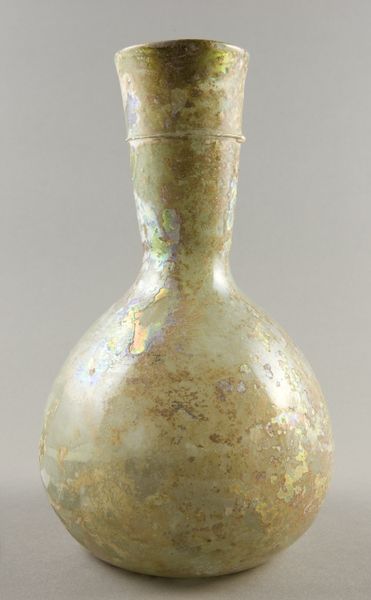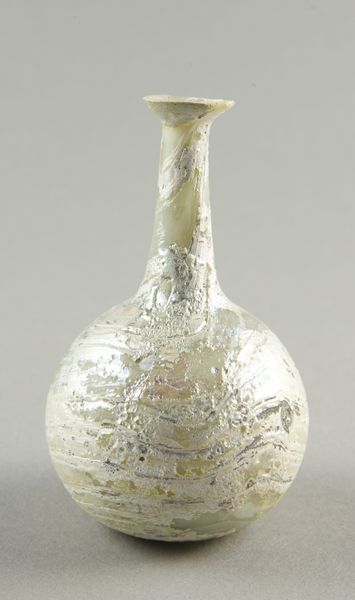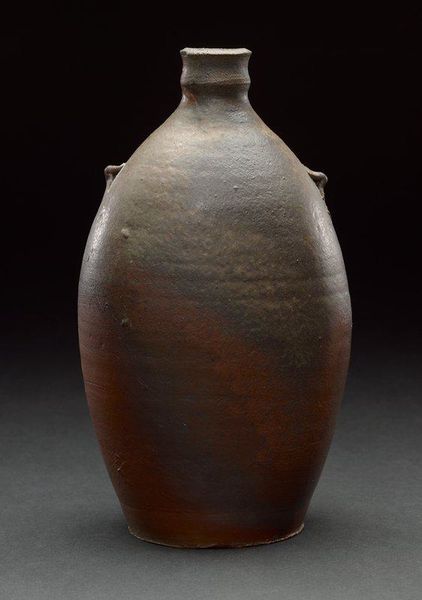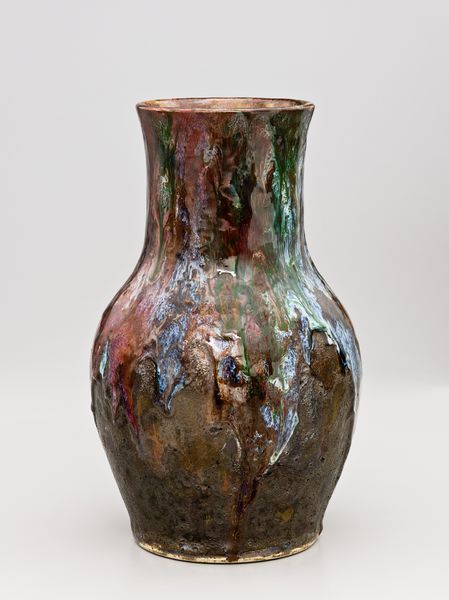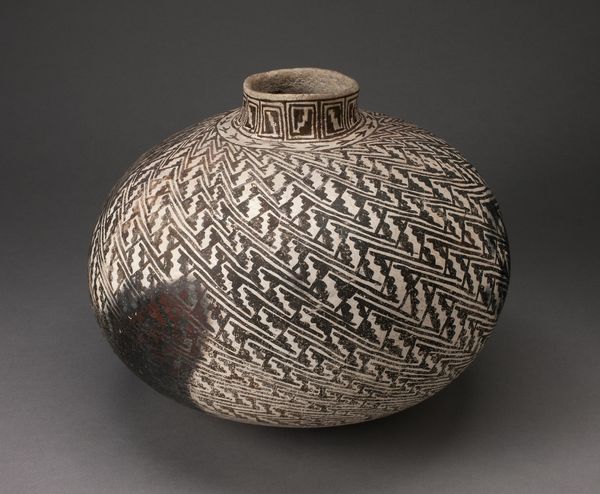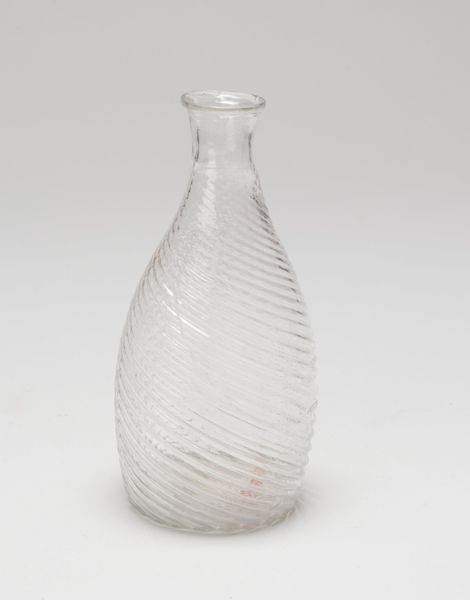
assemblage, ceramic, earthenware
#
assemblage
#
ceramic
#
earthenware
#
ceramic
Dimensions: 16 x 7 3/4 x 7 3/4 in. (40.64 x 19.69 x 19.69 cm)
Copyright: No Known Copyright
Curator: Take a look at this impressive ceramic vase, crafted around 2003 by Yabe Makoto. It resides here at the Minneapolis Institute of Art. The artwork, referred to simply as "(Large Vase)," immediately suggests complex ceramic artistry. Editor: My first impression? It looks like a cosmic artifact! The upper blue portion evokes images of Earth from space, while the lower part could be the surface of an alien planet. All that texture – is it purposeful? Curator: Indeed. Yabe Makoto employed an assemblage technique, crafting this piece from earthenware and likely firing it multiple times. It's important to see how modern ceramic artists build on ancient stoneware traditions, infusing these classical forms with an often experimental approach to materials and textures. Think of how art institutions encourage that innovation! Editor: "Innovation," yeah but that texture gets me, especially where those colors meet! It’s so… tactile, like geological strata rendered in clay. There's a really appealing contrast between the glazed, celestial blue top and the rougher, earthier bottom half. Do you get the sense it was built or grown? It reminds me of things I saw when traveling through Turkey and central Asia... Curator: The visual appeal comes from the piece's duality – raw versus refined. We see tension not only in material contrasts but also in its form. Museums often encourage dialogue around what constitutes functionality in such a sculptural vessel, challenging our preconceived notions about art’s roles. Is it a celebration of raw material or subtle artistic mastery? It demands a viewer reflect! Editor: Okay, well, museums don’t make it! A good ceramic vase, in the right space... Imagine having it on a minimalist table in a loft apartment, a single stem rising from the top; suddenly, it comes alive. That is until the house cat comes over! Curator: True. Placing such work helps situate modern art and re-conceptualize it as part of lived experience. So much art production in this genre takes place outside traditional social models! Thinking of "outsider" perspectives allows for an expanded history. Editor: In a way, isn’t art "outside" life, anyway? Regardless, it still invites a reaction. It’s certainly made me reconsider ceramic art – and makes me thirsty. Curator: A good takeaway, reminding us about the essential connection between form and context within modern ceramic. Editor: Exactly! The kind of thought you can take to the gallery shop!
Comments
minneapolisinstituteofart almost 2 years ago
⋮
Makoto Yabe attended the Kyoto Municipal Industrial School where he received a certificate in ceramics. Afterwards he enrolled in Ritsumeikan University and earned a degree in philosophy and comparative cultures in 1969. For a time he worked under the Kyoto potters Uno Sango and Uno Jinmatsu, but found the traditional apprentice system to be too time-consuming and stifling. Leaving Japan in 1977, he lived in the United States until his death in 2005, holding positions at Radcliffe College, Harvard University, and Decordova Museum (Lincoln, Massachusetts). For this vase, he used a method championed by Korean potters in the 15th century in which floral designs are stamped into the surface of the clay. The white slip is then brushed onto the surface, and the excess wiped away, leaving the stamped designs "inlaid" with slip. Although Yabe throws his vessels on the wheel, he further shapes them by hand, giving them an irregular form that accords well with the casual application of his stamped designs.
Join the conversation
Join millions of artists and users on Artera today and experience the ultimate creative platform.
